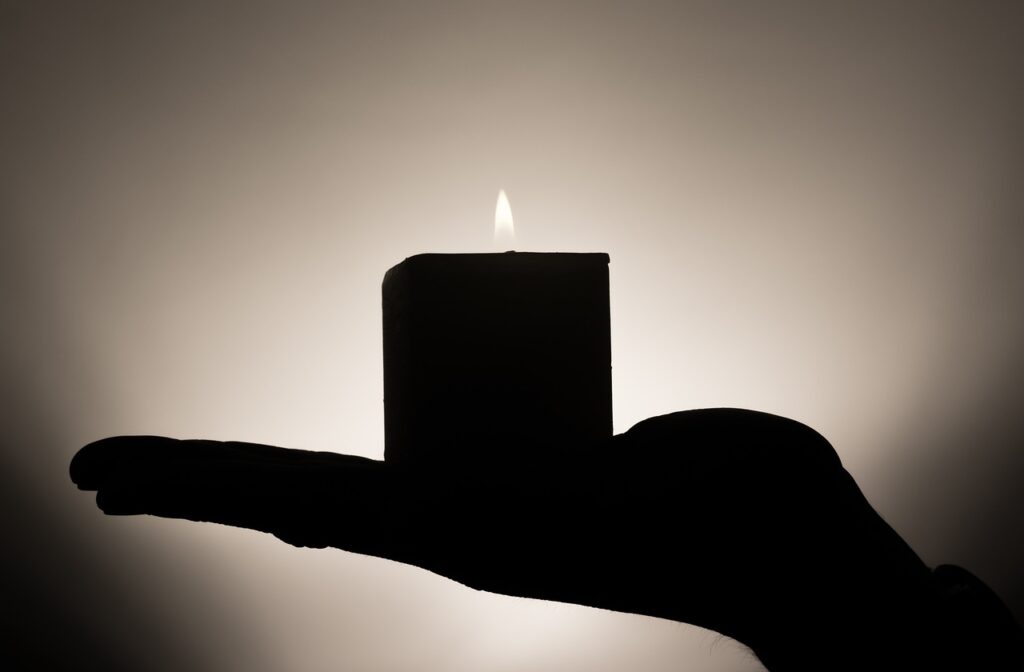What is a candlestick chart?
A candlestick chart is a financial chart that usually shows price movements of currency, securities or derivatives. It looks like a candlestick with a vertical rectangle and a wick at the top and bottom. The top and bottom of the candlestick show open and close prices. The upper part of the wick shows the high price, and the lower part of the wick shows the low price. Candlestick charts have been around since the 18th century, when a Japanese man named Homma invented them. He realized that there was a correlation between the price of rice, supply and demand, and the emotions of rice traders. He developed a chart where each candlestick represented one of the four dimensions of a trading period – the open, the high, the close and the low. A hundred years later, the West caught up with him, and the rest is history. These charts show market volatility and trends and can be an important tool for investors and traders who want a thorough analysis before investing. Technical analysis using candlestick charts plays a key role in any trader’s plan, determining times to enter and exit trades.
How does a candlestick chart work? Candlestick charts display a range of information: – Opening price – Closing price – Highest price – Lowest price – Patterns and trends in stock prices – Sentiments of trades The “real body” is the rectangular candlestick, which shows the open and close price of the stocks and shares (or rice). The wick or “shadow”, which runs from the top and bottom of the real body, shows the high and low price of the day. If the real body is black or filled, it shows that the closing price was lower than the opening price. If the real body is open, the closing price is higher than the opening. The wicks also show valuable information. A short upper wick on a down candle shows that the open price was near the high price, while a short upper wick on an up day shows that the closing price was near the high price. There is also a trend called “doji”, where the body of the candlestick has almost completely disappeared and only a cross remains. There are three types of doji: – Dragonfly: where there is no body, a long bottom wick and a minimal top wick. This shows a rejection of lower prices in favor of higher prices. – Gravestone: where the long top wick and short bottom wick show a rejection of a higher price over a lower price. – Long-egged: has two long wicks; it shows uncertainty, with no clear trend. There is also a hammer and a reverse hammer related to the dragonfly and tombstone doji. In contrast, they have small real bodies, unlike dojis, which have no body at all. If there are many candlesticks on a chart, these show a variety of trends. These trends and patterns are called either bullish or bearish.
Bullish patterns show trends that indicate a likelihood that the price will rise, and bearish patterns show that a price is likely to fall. While these patterns are not infallible predictors, they show trends in motion. Trading, while having some measurable elements, is largely dictated by emotion. Viewed holistically, candlestick charts show this sentiment. The ratio of open, close, high, and low all affect the candlestick’s appearance.
Candlestick chart pattern
Generally, the smaller the wick is and the longer the body is, the stronger the change of bullish or upward price trend. The smaller the body and the larger the wick, the more the bearish or depreciating price trends.
Bearish engulfing pattern
This pattern shows an upward trend where sellers outnumber buyers. There is usually a long, solid real body engulfing a small, open real body, showing that it is a seller’s market, and the price may continue a downward trend.
Bullish engulfing pattern
This pattern shows when there are more buyers than sellers. A long, open real body engulfs a small, solid body, indicating that the price may rise.
Evening star bear
This is a topping pattern, where the last candle opens under the previous day’s small real body. The last candle closes deep in the real body of the candle from two days earlier. This pattern shows that buyers stop and then sellers take control. It suggests that an increase in sales may be developing.
Bearish harami
A small solid body is completely inside the day inside the real body. This does not show a pattern that needs to be acted upon but is something to watch. It shows indecision, and the days following, whether they reflect an upward or downward trend, will determine action.
Bullish harami
This opposite of Bearish Harami shows a downtrend. A small open body is overshadowed by the previous day’s solid real body. This shows a break in a trend and needs more days to see any new trends.
Bearish harami-cross
There is an upward trend with open candlesticks, followed by a doji. This shows that the stock is best to watch and wait to see any trends.
Bullish harami cross
There is a downtrend with solid candlesticks, followed by a doji. This shows a stop in a trend and may need further data before acting, buying or selling as a result. Charts similar to candlestick charts
Box and whisker chart
A box and whisker plot has squares with horizontal whiskers; it shows data distribution with extreme values and can be used over a variety of data. For example, in psychology, a box and whisker plot can show the top and bottom range (at the end of the whiskers) of what a population’s intelligence quotient (IQ) might be if everything went right or wrong. Then the box can show the actual IQ range based on testing. While a candlestick chart has a narrowly defined range of four components (open price, closing price, highest price and lowest price), a box chart, or box and whisker plot, shows extreme values, upper and lower bounds, median and first and third quartiles. These charts can be used to display a wide variety of data types; although they look similar, their uses are quite different.
Bar chart
One of the most basic charts, a bar chart, can show the same information as a candlestick chart but in a different way. Bar charts are less visual and more difficult to understand. The thickness of the real bodies on a candlestick chart highlights the difference between the closing and opening price. Whether a candlestick or bar chart is used depends on the information needed. If the opening and closing prices are most important, the candlestick chart is best. If all parameters are equally important, a bar chart shows this data best.
Line chart
A simple line chart shows the information from one day or a trend over time. However, if a line only represents the closing or opening price, it can remove volatility and take the price out of context. Multiple line charts become too difficult to interpret.
Heiken-Ashi diagram
Heikin-Ashi is a bar chart technique best used in combination with candlestick charts. It makes candlestick charts more readable and easier to assess trends.
Renko chart
The Renko chart uses price movement rather than drawing a price with a standardized range. It looks like a series of bricks stacked in rock structures. It is useful for identifying support and resistance levels because they are simpler than candlestick charts with all the ‘noise’ removed.
The future of candlestick charts
Although it is a niche chart, there are still a range of alternatives, such as the Heikin-Ashi and Renko charts. These should all be examined to identify trends and patterns, and it is best when there is a range of graphical data available to interpret. Investor sentiment dictates much about future stock prices and trading movements. Although sentiment cannot be measured, candlestick charts help traders see trends, assess trends of sentiment, and make predictions about future prices.
About the Vikingen
With Vikingen’s signals, you have a good chance of finding the winners and selling in time. There are many securities. With Vikingen’s autopilots or tables, you can sort out the most interesting ETFs, stocks, options, warrants, funds, and so on. Vikingen is one of Sweden’s oldest equity research programs.
Click here to see what Vikingen offers: Detailed comparison – Stock market program for those who want to get even richer (vikingen.se)













